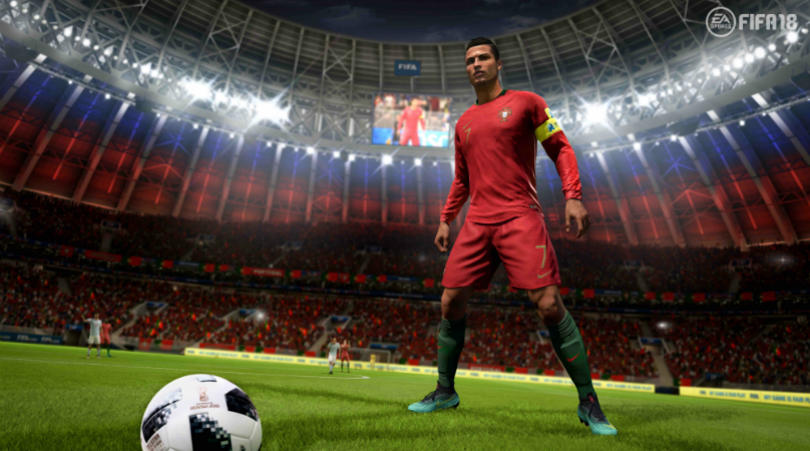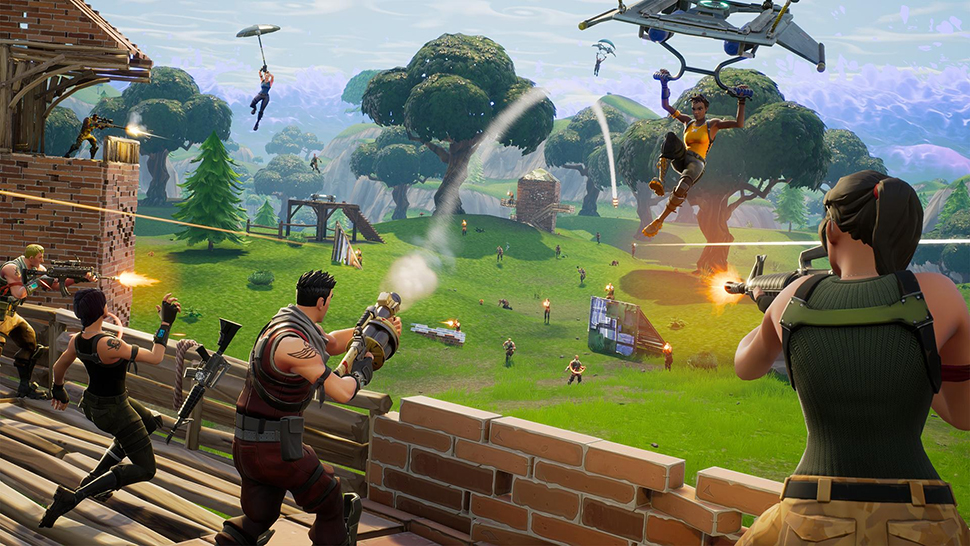How football is turning to videogames to stay relevant
Videogames are having an impact on football - this is how

As World Cup fever can attest, football is in its prime at the moment. The matches have never been better (arguably), the players more famous or indeed expensive. But the beautiful game is facing an ugly problem: younger fans are being swayed elsewhere because of rising ticket prices and the changing face of where they get their media.
TV watching is down, streaming and YouTube viewing is up. Without these fans, the future of the game could be in doubt.
But football broadcasts are adapting to the needs of its younger audience, taking cues and inspiration from their direct competitors and one of the reasons it is doing this, is because of esports.
The rise of esports
Competitive gaming has well and truly hit the mainstream. Services such as Twitch have made it easy to follow the myriad gaming tournaments happening at the moment. Whatever your esports quirk - from Fifa to Fortnite - you can log on and stream the action.
According to Campaign, some 385 million followed esports in all its forms last year and by 2020 that number is set to grow to 589 million.
The money for those participating - not to mention those streaming - is incredibly lucrative and the fan bases that have appeared are incredibly loyal.
For those who dismiss esports because it isn’t a real sport are missing the point. Take, for instance, the recent Fortnite league that happened at this year’s E3. This was a precursor to Fortnite’s $100 million tournament bounty which is already underway.
Sign up for breaking news, reviews, opinion, top tech deals, and more.

It was a charity tournament where 50 Twitch and YouTube personalities and 50 celebrities played it out to win a $3 million prize pot. The final took place in a packed-out stadium, and the Twitch feed at one point had 700,000 concurrent people watching.
Yes, you get more people turn up to watch two teams kick a ball around but for something that’s in its infancy, this is impressive stuff.
Leagues and legends
The Premier League in the UK has taken notice, too. Manchester City and West Ham United already have esports players on their books and this has got people speculating that an esports Premier League is about to happen.
And why not, given esports is a sports offshoot after all? Well, that’s where the problem lies. Not even esports fans know if what they are watching is a sport, despite the name. A study by Nielsen found only 53% consider esports to be an actual sport. When asked if it should be in the Olympics, only 28% agreed.
A big advocate for calling exports a sport is League of Legends developer Riot Games. It made a superb video that puts the argument to rest.
A sport needs competition, dedication and a fan base - there’s nothing better than watching people on the top of their game compete against each other.
Eli Gallagher is a professional Overwatch gamer who plays with the Evil Geniuses esports team. Speaking to TechRadar about how he prepares for a tournament he explained: “The way I practice is I try to get ten hours of serious game-play in a day, where I’m taking the game 100% seriously.
"That means I’m playing to win, I’m playing to do the best I can in each of those games. That wasn’t always easy when I started, because I had high school. Balancing playing Overwatch and sleeping and going to school was a really tight fit.”
This type of dedication is a familiar story for athletes the world over, whether their game is football or darts and it is now the same for esports.
No wonder the fan base is growing.
The Fifa effect
As much as you would think that a game such as Fifa would bring people closer to football, it has actually given many a skewed version of what watching football is like. The instant replays, quirky camera angles and truncated match times have all created an immediacy to football that may not always be there in the real game.
Forget England expects, football fans that have grown up on a daily diet of Fifa expect a premium slickness to the game that you just aren’t going to get on a rainy day in Stoke.
The brilliance of football sims has made the beautiful game better to watch on television though.

Broadcasters have learned from computer games and adopted some of their style in how they approach the filming of a football match and the analysis that follows. Long gone are the days when a scribbled circle on a piece of paper suffices as match analysis.
Now pundits are fast-forwarding to key moments, using tablets to rotate camera angles, zoom in on the action and cut out and physically move players from parts of the pitch to other areas, seamlessly,
Sky’s the limit
Sky, in the UK, is undoubtedly the star at doing this and it’s currently using tablets and gaming technology in its game analysis.
“Tablets continue to be at the forefront of broadcasting, powered by ChyronHego and Piero technology,” explained Sky Sports Head of Football Gary Hughes at a recent event.
“They allow our pundits to cover every aspect of the game and break down key moments. Opta data is fed directly into those screens, allowing pundits access to touch-maps and positions, providing our customers with extra detail and depth to analysis.”
Sky also uses data from EA Sports to help with their coverage.
“Our partnership with EA Sports allows us to recreate any moment from any game, to provide additional views and perspectives from officials or player points of view,” Hughes notes.
“Then there’s our studio technology, where an Ncam and VR tracking system brings team line ups, formations and social media interaction into the studio environment and also allows us to create a virtual window into our studio.”
It’s not just in the UK where this gamification of football broadcasting is happening. TechRadar spoke to Roger Brosel, Head of Content and Programming, at La Liga - the Spanish football league - back in March about its approach to broadcasting football and it is also looking to videogames for inspiration.
“Someones first experience with football isn’t on the television. Right now many kids get into football through videogames, they have played as their favourite players in FIFA," said Brosel.
“They may not have experienced seeing these players live so they get used to videogame-style shots of the game - close-ups of the ball, cameras behind the player about to shoot a penalty - instead of the typical camera one angle.
"We want to update how we deliver football to our fans and we think that Sky Cam helps us a lot.”

The Sky Cam Brosel mentions has been around since the 90s. It’s a camera system that’s suspended by cables and zips around above the players’ heads when the game is on.
It’s fast, nimble and can offer some brilliant shots that a static camera just can’t achieve. Two people remotely control it: a pilot that moves the device and one that controls the camera. Brosel believes the use of this offers up a videogame sheen to their broadcasts.
“We wanted to make La Liga look cool and you can get some great shots with the Sky Cam,” said Brolis. “Before we used it, it was only really used in top games but we wanted it to become standard in La Liga. It makes the broadcast really beautiful and makes the angles spectacular.
“We have worked with the clubs and installed a Sky Cam permanently in their venues. It’s currently available in eight stadiums.”
Another piece of technology used in La Liga is Intel True View. Favoured by the NFL, this technology uses 38 5K cameras to stick together a 360-degree view of the match, so it can be replayed at any angle - even from the point of view of a player.
This means that a highlight reel of a football match will be as interactive as any videogame. La Liga is hoping it’s these innovations that will entice younger viewers to put down the controller and watch their matches.
Videogames aren’t the enemy of sport, but the present and the future. There are certain commonalities between putting on a pair headphones and a pair of boots - the pitch may look different but the will to win is the same.

TechRadar's World Cup coverage is brought to you in association with Honor.

Marc Chacksfield is the Editor In Chief, Shortlist.com at DC Thomson. He started out life as a movie writer for numerous (now defunct) magazines and soon found himself online - editing a gaggle of gadget sites, including TechRadar, Digital Camera World and Tom's Guide UK. At Shortlist you'll find him mostly writing about movies and tech, so no change there then.